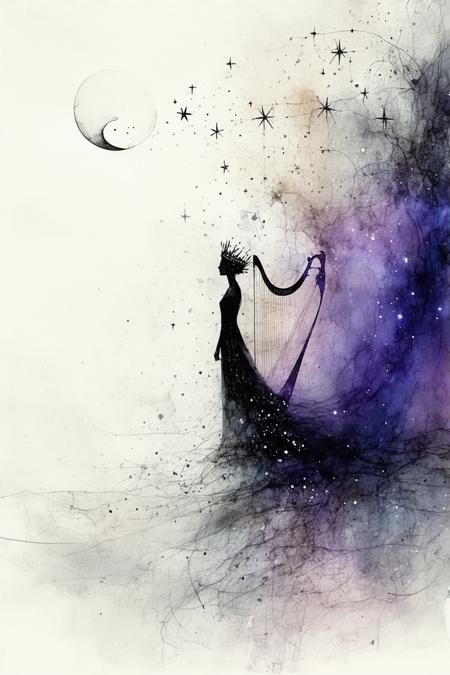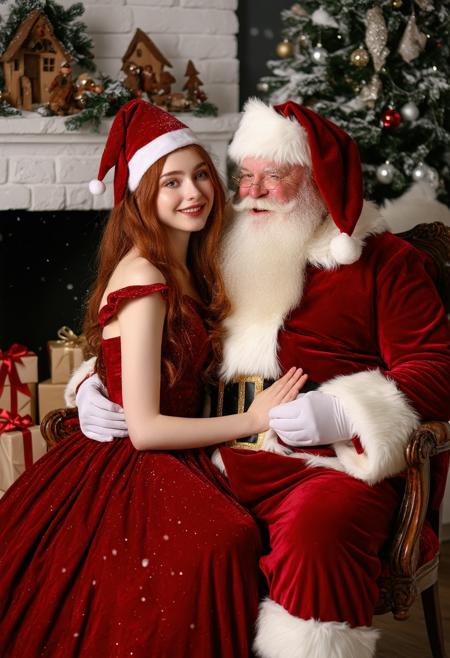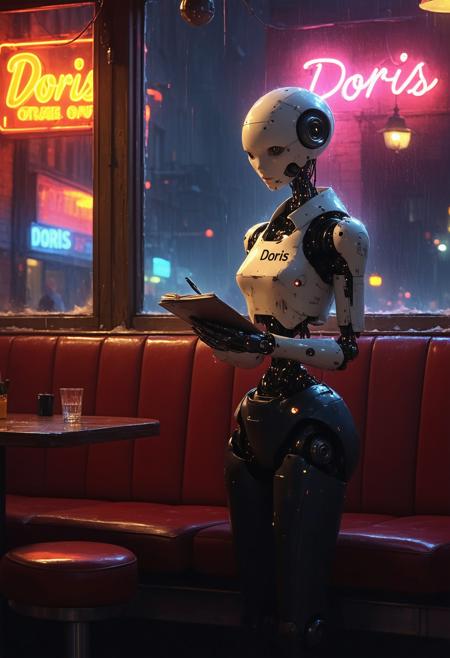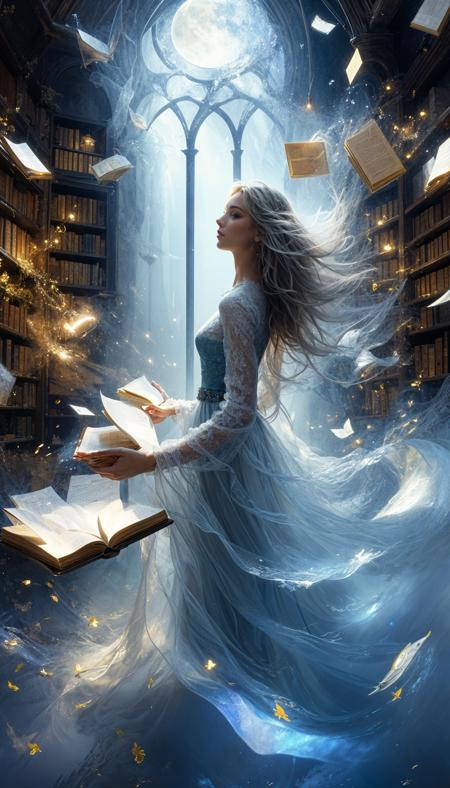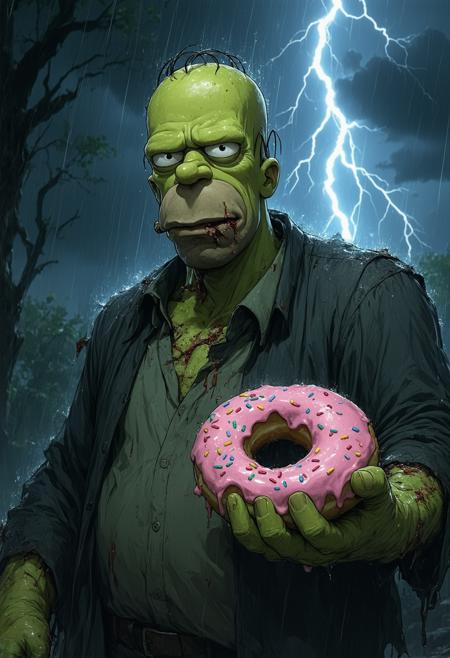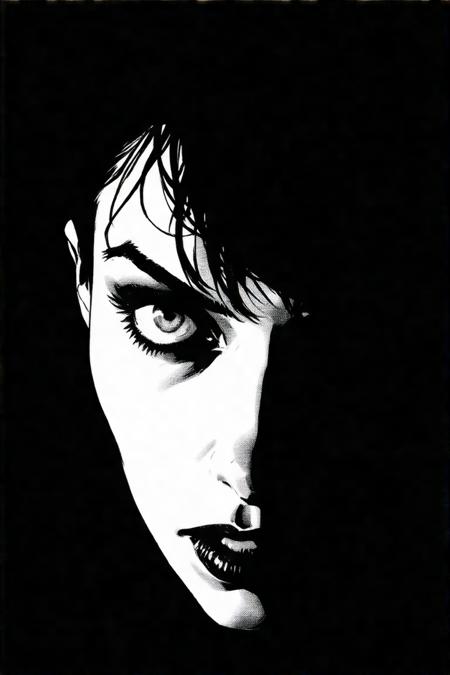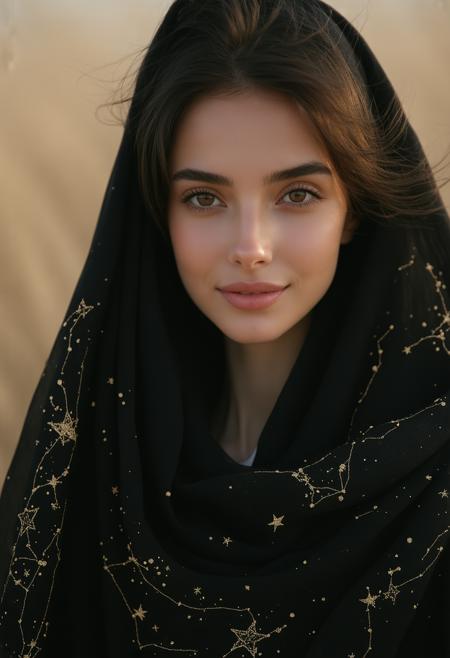A ethereal female figure with flowing silver- white hair emerges from a spiral of floating books and manuscripts, her hands gracefully conducting an orchestra of letters and words that swirl like autumn leaves through a misty library space, reminiscent of Gustav Klimt's golden patterns merged with Alphonse Mucha's elegant art nouveau lines. Her diaphanous dress transitions from solid fabric to pure light and text, while reality itself seems to bend and ripple around her like liquid glass, creating prismatic refractions that catch and scatter soft, diffused moonlight streaming through towering Gothic windows. Ancient symbols and calligraphy float in the air, glowing with inner luminescence, while weathered tomes slowly orbit her form like celestial bodies, their pages unfurling into ribbons of poetry that weave through the scene, detailed in the dreamy watercolor style of John William Waterhouse combined with the surreal elements of Vladimir Kush. The background dissolves into a cosmos of illuminated manuscripts and constellation- like arrangements of words, rendered with the precise technical mastery of Alan Lee and the mystical atmosphere of Brian Froud, all bathed in a palette of deep midnight blues, burnished golds, and opalescent silvers that suggests both timelessness and transformation, cinematic lighting, highly detailed, rich color grading, photorealistic quality, volumetric lighting, ray tracing, 8k resolution





